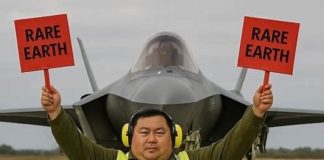MARKET PERSPECTIVE
By J Mulraj
AUG 3-9, 2024
And spooks global markets
Japan’s Government debt is, as per IMF the highest in the world, at 214%. So, for decades, it had a zero interest rate policy; most of its debt was domestically raised. Large investors borrowed at low interest rates and invested in higher yielding bonds, and in select stocks, of other countries. The differential in interest rates, or carry trade, gave the investors a cozy return. So long as it’s currency didn’t appreciate and the interest rate differential didn’t narrow, it was easy money.
Last week, the Japanese central bank raised interest rates by 0.25%. Its currency appreciated. A poor jobs report in USA weakened the USD. The carry trade unwound, and those investors who had borrowed in Japan had to sell foreign assets, thereby crashing global markets. From their all time highs, the fall on August 5 of various stock markets was 25% in Japan, 20% in Taiwan, 16% Korea, 6% Australia, and 4% India.
Japan’s economy, #3 in the world, has grown at a modest rate, largely due to a stagnant population. It is currently at 122 million, and falls 0.5% every year. Japan has a fertility rate of just 1.37 per woman, far below the 2.1 rate needed to maintain a population. It does not allow immigrants to boost its population as it wishes to preserve its unique culture. As of March 24, sale of adult diapers exceeded sale of baby diapers in Japan for the first time, revealing its poor demographic profile. So the growth of Japanese GDP will continue to be subdued.
Jerome Powell, Chair of US Federal Reserve, also has unenviable choices. If, under pressure from the winding down of Japanese carry trade, he cuts interest rates sharply, he risks a resurgence of inflation. But if he doesn’t, he risks a recession, as many businesses are unable to sustain high interest rate much longer. Notably, the Commercial Real Estate space, which is imploding. Commercial buildings have high vacancies, and owners are unable to service their debt obligations to banks, mainly the community banks.
China, the #2 economy, has several problems too. It’s fertility rate, at 1.71, is also far below the 2.1 rate needed to sustain a population. It’s not expected to rise, especially with high levels of youth unemployment (the Government has stopped releasing figures, estimates are in mid to late 20%). Foreign manufacturers have left China, noticeably after China’s new anti espionage Act, (under which a normal ‘how’s business?’ can be interpreted as spying). Over 100 Japanese manufacturing companies have left China in the past 3 years.
The problems of the top three economies makes one ask who will be the economic engine for global growth?
India?
PM Modi recently revealed some impressive numbers. Stock market cap has hit 5.5 trillion, 1.4 times its nominal GDP. USA is at 1.8X, China is 0.5, Japan 1.4, Germany 0.6 and UK 1.1. So India is viewed as an attractive market.
India’s MSME (medium, Small and Micro Enterprises) have created 205 million jobs in 5 years, an impressive performance. Entrepreneurship and innovation is evidenced in the 140,000 startups which have generated 1.5 m. jobs.
So India has the potential to lead in economic growth, but it has to fix its weaknesses. It must avoid the type of flip flops the FM made in the Budget, e.g. in first withdrawing, then reinstating though not fully, the indexation benefit on long term capital gains. It must urgently tackle, along with the judiciary, the abysmally slow pace of the legal system. This is a big impediment to increasing Foreign Direct Investment (FDI) inflows, which brings much needed well paying jobs. India has, ineptly, devised a model framework for arbitration treaties which has not been accepted, as it asks disputing parties to exhaust judicial remedies in India first. That takes a generation. The buoyancy in GST tax collections has only led to tax authorities seeking more, like Oliver Twist.
More than the unwinding of the Japanese carry trade, investors should be concerned about the possibility of WW III should the expected retaliation by Iran and its proxies to the killings of Hamas leader Haniyeh, and Hezbollah leader Shukr, result in a serious escalation.
What was holding Iran back from a retaliatory offensive was its poor ability to defend itself against stealth aerial attacks. However, Russia has just offered it defensive missile capabilities which makes an offensive more imminent. Hezbollah has already launched missile attacks against Israel. Such an attack could easily escalate into WW III, perhaps, heaven forbid, a nuclear one.
Even if it were, providentially, conventional, Iran can blockade the Strait of Hormuz, through which 20 m barrels of oil, or 30% of global oil trade, passes. A blockade would cause the price of crude oil to shoot up. Some 70% of this oil is headed for Asia, including India, whose economy would suffer immensely.
Hatred spreads fast, like a running hare, whilst mature statesmanship moves at the pace of a lazy tortoise. One can only pray that Aesop was right.
Last week the BSE Sensex ended at 79,705, down 876 points over the week.
The multiplicity of risks – financial, geopolitical, inflation, others, call for caution. The market is depending on J. Powell to cut interest rates in September, or perhaps earlier, but he has a tough decision to make. After wrongly assuming inflation was transitory, he now intends his actions to be salutary.
And then there is an election in November. With all these factors at play, there are many bullets to dodge.
Picture Source: https://www.latimes.com/sports/la-sp-sumo-wrestling-erskine-20150805-column.html
Comments may be sent to jmulraj@asiaconverge.com










































COMMENTS